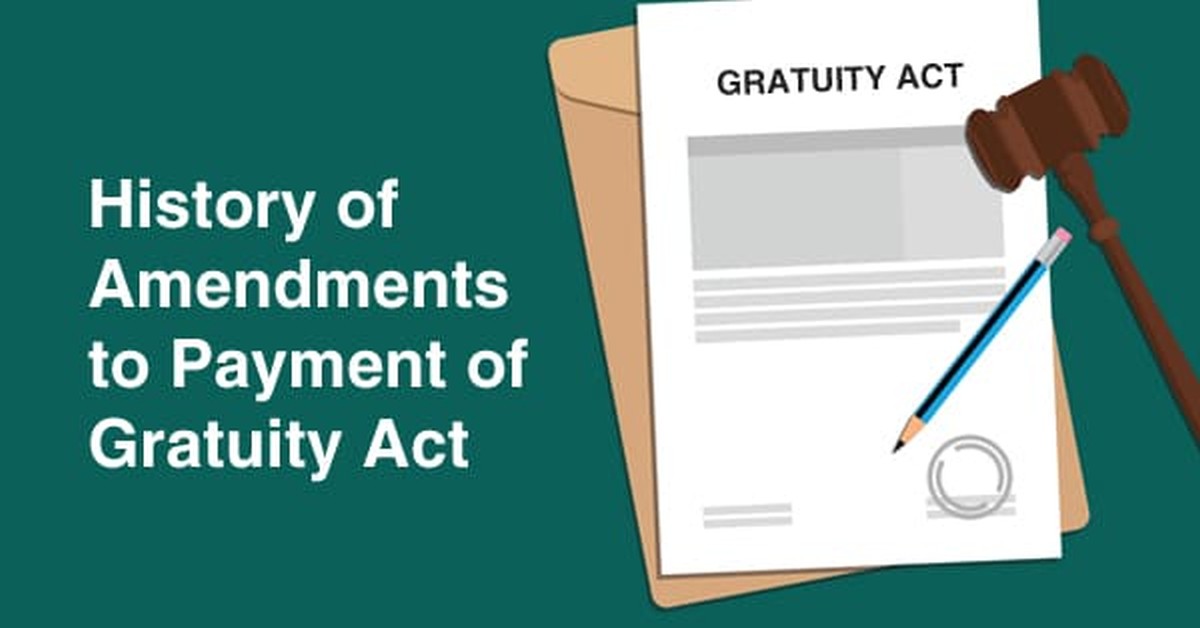When an employee leaves the service, employer rewards him for his accrued service in the organization. He does so by giving you a free lump sum of cash - called gratuity in financial parlance - on your exit. The amount that an employer gives is based on the number of years of service employee have put into the organization.
Gratuity in earlier days was rather arbitrary and completely hostage to the whims of the employer. A wealthy, well-established employer would reward his dedicated employees and the not so rich would refuse such generosities. This led to a lot of discord and finally, the government stepped in, passing the Payment of Gratuity Act, 1972, making it mandatory for all employers with more than 10 employees to give them the gratuity. Employees, as defined here, are the ones hired on company payrolls. Trainees are not eligible and gratuity is paid on the basis of the employee's basic plus dearness allowance if any.

How much can an employee get?
An employee becomes entitled to a gratuity on resignation or on retirement after five years# or more of service. As per the Act, the gratuity amount is 15 days' wages multiplied by the number of years put in by you. Here wage means your basic plus dearness allowance. Take the monthly salary drawn by you last (basic plus dearness allowance) on resignation or retirement and divide it by 26, assuming there are four Sundays in a month. This is your daily salary. Multiply this amount by 15 days and further with the number of years you have put into service. Gratuity is payable to an employee on exit from service after he has rendered continuous service for not less than five years:
(a) On his superannuation
(b) On his resignation
(c) On his death or disablement due to employment injury or disease.
In case of (c) vesting condition of 5 years does not apply. get at the time of retirement/resignation after completion of 5 years of continuous service. In case of Death of Employee, his/her nominee/nominees without any vesting condition of 5 years as gratuity is payable to nominee immediately after death of an employee.
History of amendments in Gratuity Act?
Gratuity benefit is usually payable at the time of retirement. Since at the time of retirement employee generally has no source of regular income and due to old age- increasing medical expenses and increasing inflation to meet with day to day expenses. So to cope up with all these uncertainties, Gratuity Payment becomes a financial support to meet necessary expense as a single one-time payment. The rules and regulations being prescribed in Gratuity Act 1972 need to be amended from time to time and Labour Ministry tries to provide full justice by making amendments to the above act, in the national Parliament. Some of the amendments in the Payment of Gratuity Act 1972 are as follows:-
The first amendment made by the Payment of Gratuity (Amendment) Act, 1984 inter alia provides for raising the wage limit for coverage from Rs 1000/- to Rs 1600/- per month and appointment of Inspectors.
The second amendment made by the Payment of Gratuity (Second Amendment) Act, 1984 inter alia re-defined the term ‘continuous service’ and provided for the grant of exemption to a class of employees from the operation of the Act.
The third amendment made by the Payment of Gratuity (Amendment) Act, 1987 inter alia provided for:-
(a) Raising the wage limit for coverage from Rs 1,600/- to Rs 2,500/- per month, which was further raised to Rs 3,500/- p.m.
(b) Replacing the ceiling of twenty month’s wages for payment of gratuity by a monetary ceiling of Rs 50,000/-
(c) Making it obligatory for the employers to pay simple interest at a specified rate if the gratuity is not paid within 30 days from the date it falls due.
(d) Compulsory insurance/setting of gratuity fund for payment of gratuity.
In later amendments, wage limit was removed altogether and ceiling limit was revised from time to time. Ceiling limit was raised to Rs 100,000 from Rs 50,000 in 1994 and further raised to Rs. 3,50,000 in 1997.
As per Payment of Gratuity (Amendment) Act 2009, all Teaching Staff in all the unaided educational institutions eligible for payment of gratuity with retrospective effect from 1997.
As per Payment of Gratuity (Amendment) Act 2010, the ceiling limit of Gratuity was raised from 3 Lakhs to 10 Lakhs effective from 25.05.2010.
As per Gazette notification issued by Ministry of Law & Justice in The Gazette of India on dated 29th March 2018 as applicable WEF same date amends the Ceiling Limit from "ten lakh rupees" to "Twenty Lakh rupees"
The author can also be reached at tikaramchaudhary@gmail.com








 CAclubindia
CAclubindia
